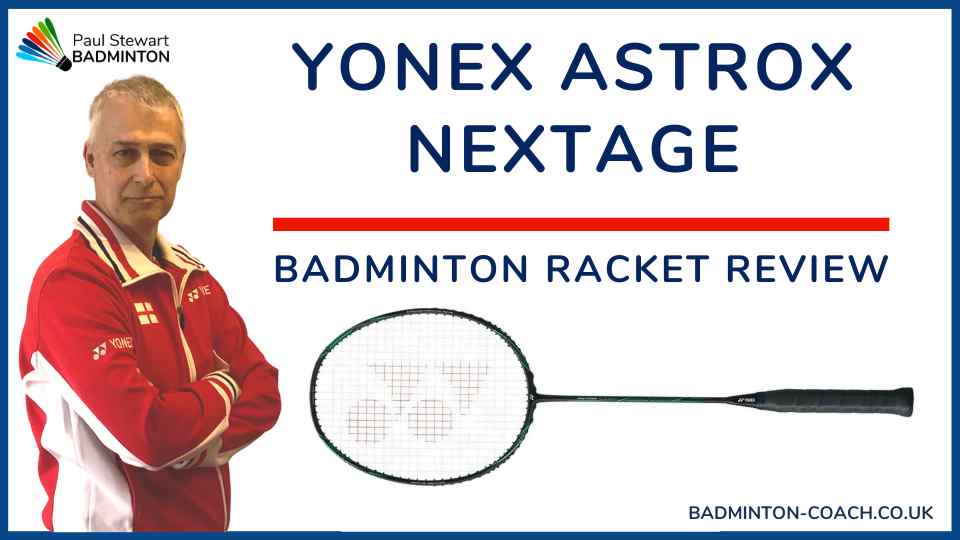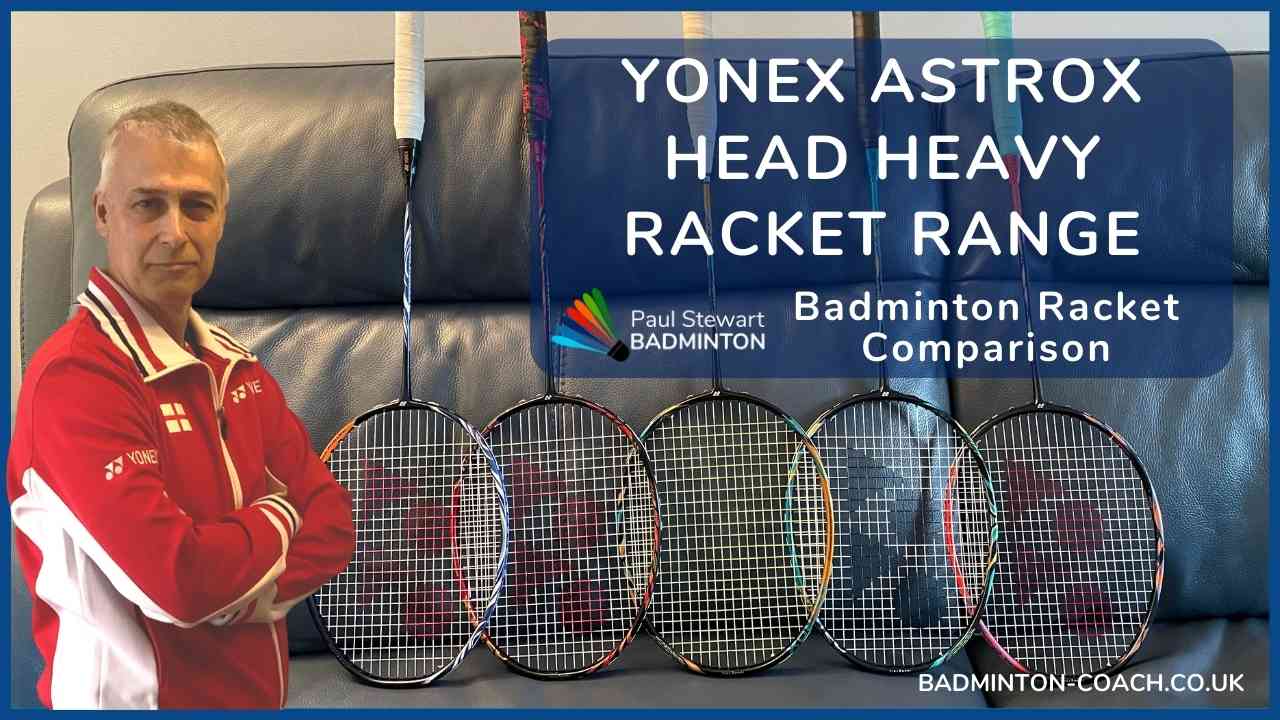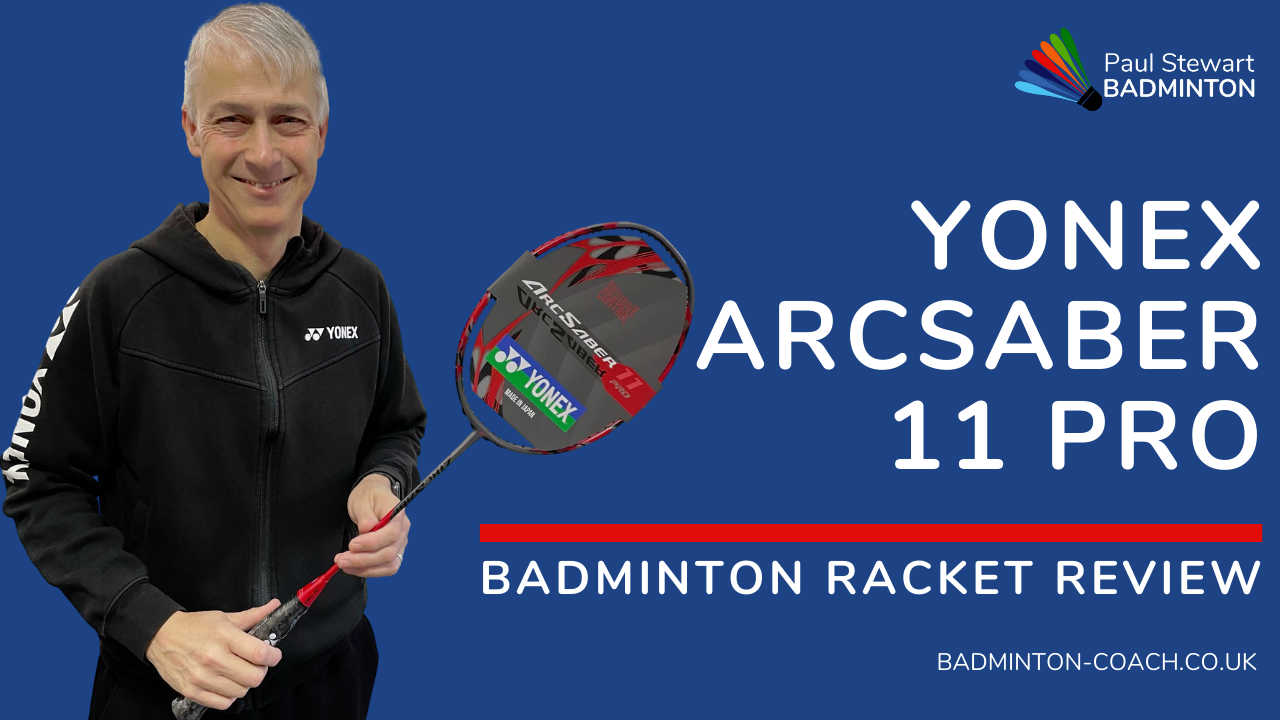
During my travels and discussions with players, I’m amazed at the number of times I’m told stories of major defeats, with the only reason given was that they played on the opponents “home” badminton court.
For most badminton tournaments or league matches there isn’t a huge crowd to cheer the locals to victory. This is what our international players have to play against. So, why should there be such a difference and what can you do to combat home advantage?
Here’s my top 5 tips to help you make a major breakthrough in your away matches
1 Court Dimension
Most court measurements are the same to meet International Badminton regulations. However, you should not take it for granted that they are. Pace your existing court so you know the dimensions. When you get to the away match, a quick check should confirm you’re playing on a court with the same measurements.
Believe it or not, I’ve been caught out by this in the past. I played at an old church hall and the court was short, although the club had painted the lines so it looked fine. As a result, my serves were long and I struggled to keep the shuttle in. On this occasion, I averaged a loss of 7 points per game which turned the eventual result into my opponents favour.
Here’s what you must do…
First of all you need to check which dimensions are incorrect prior to adjusting your game. If it’s just the back line that is shorter then the simple action is to test hitting “short” and asking your partner to allow the shuttle to drop so you can gauge where it’s landing in relation to the line. You can then get a feel for the length you need to hit.
Practice both short and flick serves prior to the commencement of the game to get your eye in.
Ask your partner to short serve and flick serve you so that you can count your steps to the back service line to ensure you are clear when the shuttle is in.
Check you have sufficient room to run around your backhand without crashing into obstacles.
2 Ceiling Height
This is the usual difference and one that catches many players out. Why? Simply, the height of the ceiling can dictate the pace of the game. Teams that play in low ceiling halls tend to play a faster flatter game. They punch clear and try to attack more frequently knowing that a lift from you may hit the ceiling and be called a fault. They also play a faster pace as they are used to the speed of play in their particular hall.
Consequently, teams that play in halls with high ceilings tend to use the height to their advantage and play at a slower pace. They can vary the pace a little more and are not as fast and eager to get on the attack compared to my example above. They know that they can use height to get out of trouble and therefore are prepared to take a few more risks in order to out manoeuvre the opposition.
Here’s what you must do…
If you know ahead of time what your opponent’s home court is like, then create similar conditions whenever you can at your club and play the game to these conditions. This is easier if you play at a club with a high ceiling as you can practice punch clears, playing fast, getting on the attack quickly.
Remember also to practice your serves, both low and flick serves, but especially your low serves. If you can continue to serve well in these conditions, then your opposition is under pressure.
Work with your partner regarding their presence at the net. You need to threaten any net return from the serve from the outset so your opponents are backing off this tactical stronghold. The more you control the serve and restrict your opponent’s returns, the more points you will win. Controlling the net is always a winning tactic.
Sadly, if you play in a hall with a low ceiling, you cannot create the height to practice. However, it is easier to hire a court at such places to get some practice in.
But, if you can copy my recommendations above regarding serving and return of serve, the same tactic will work for you too. By putting pressure on your opponents in this key area may rush them into a pace of game they’re not used to. This could lead to errors and more points for you. They are then playing your normal pace which you should be better equipped to handle.
Continue to keep the shuttle low and try to play to your strengths in terms of pace and shot repertoire rather than succumbing to your opponents pace. Speed the game up at every opportunity and keep attacking.
3 Know Your Back Line
Whenever I visit a badminton club or sports centre, one of the first things I do is get to know my back line. You see, whilst the dimensions on court may be the same, it’s amazing how many times a player can be disorientated by their new surroundings. This means they leave far too many shuttles that land in, costing them dearly. Has this happened to you?
Here’s what to do about it…
Stand at the back line and look up at the ceiling. Make a mental note of any overhangs, girders etc that are there. Now judge whether the shuttle would be out if they past this point or not. Ask your partner to send a few shuttles towards the target area and see what happens. Usually, you can quickly find the spot on or near this target that allows you to make the right decision.
Make sure you do this for both sides of the court! You’d be amazed how many times players forget this and you then don’t have the time to test your target area.
Use this same target to practice your lifts from the net and ask your partner to let the shuttle fall so that you know how close to the back line you’re lifts are getting.
4 Slippery Floor
Some places you’re asked to play are deadly. They have extremely slippery floors, which means that you can hardly move your feet to retrieve the shuttle. But, your opponents seem to be fine and they’re chasing around winning point after point easily.
Here’s what you must do…
Take a spare damp towel with you in your bag. Try wiping your feet on your towel and testing the floor again. Usually, the damp towel trick does the job and suddenly you have grip. If this is the answer for you, then leave the towel by the side of your court and frequently wipe your feet in between points to maintain the best traction on your shoes.
There are sprays you can buy to help you grip. Yonex sell such a spray and I’m sure there are others too. Keep the spray in your bag for such occasions and use sparingly. Too much moisture on your sole can be just as deadly.
5 Shuttle Speeds
This is a subject readers of my blog know I am very passionate about. Players seems to think that they must accept whatever shuttle the opposition gives them as the right one for the game. No!
You already know that playing with incorrect speed shuttles can have a detrimental effect on your game. If they’re too slow , you’re struggling to reach the back line for length, or can’t finish off the point as your smash is ineffective. Or, too fast and you’re hitting shuttles out of the back on serve and wherever you are on court, giving your opponent so many easy points.
Here’s what you must do…
Stand your ground, you are in the right. Test the shuttle as I’ve shown you in an earlier video and article. If the speed does not meet the guidelines, then either change the shuttle or alter the feather until it does. This may mean tipping the feather either outwards to slow it down, or inwards to speed it up.
Never settle for a poor speed feather when you have the capability to do something about it.
Summary
No matter what conditions you are met with, there is a way in which you can prepare for them ahead of the match and be ready to face the opposition with a game plan to win.
Many of the elements I have mentioned in this article are external and can be managed if you are prepared. Certainly, there is no reason why you should lose so many points over such things if you are prepared.
These “home advantage” elements can easily dissipate with the right preparation, and instead of losing so many cheap points to your opponent, you could be turning the tables on them and winning the match.
As always, I encourage comments to my articles and if you feel there are other areas I haven’t mentioned, then please let me know. I’ll include them on a future article.
To your success.
Paul











the problem with shuttles provided is a big one for me, I lost a match recently which really annoyed me. We had beaten thier third and second pairing easily, we came to thier first pairing and knew it’d be a tougher game. We won the first game, then mid way through the second the shuttle died. I requested that the shuttle be changed, only to be told they didn’t have any. This then meant I was struggling to clear and get control with it. Of course you could say its the same for everyone, and it is, but it kinda got under my skin. We lost this game. Just before the third and final game, a new tube was suddenly produce from a cupboard, unfortunately by this stage, we had lost momentum and they overwhelmed us, as we then struggled to regain composure. Ultimately we should have not let it bother us, but I also feel this was poor from the opposition team,
Term
It’s a shame you had so much trouble over the poor shuttles. If I were you I would have broken a feather to completely kill the shuttle. After all, the shuttle was not fit for play and therefore it needed seeing off for good. Lesson learned, next time kill the shuttle and stand your ground to play with decent shuttles.
Clubs get away with it because players don’t know how to handle situations like these.
To your success
Paul
Hi Paul,
yeah sure, you can go ahead and use my comment if it would help other players. in fact i would be glad to recommend your advice/tactics to others as well. i told my other badminton buddies about you and they are becoming regular on your blog. its pretty tough to find a coach for badminton in our country where it only played during winter. we actually try to play all year round and try to improve ourselves as much as possible. since we don’t have any coach to guide us on, we only rely on you tube and recently on your blog.. 🙂
so thanks again and i’ll get back with a lot of questions soon.
take care and ciao
asif
Thanks Asif
I’m looking forward to your questions. Feel free to suggest some ideas for videos too.
I think you and your friends will love the videos I’m currently working on!
To your success.
Paul
Hi Paul,
thnks again for ur advice. i followed ur advice; altho we lost but took the game in to three sets. once again miss it by a whisker.. funny thing is, in all the sets we were in front by at least 5 point margin but eventually succumbed to defeat. my partner seemed to hit the panic button and could not cover the net when we were on the attack. i’m not saying i’m the best, but crowd was saying that if my partner could cover me up a bit more, we would have won easily. and believe me, after this match, i started to believe, badminton can be played in the mind too. we were playing like crazy before the finals and the day when it counts, we somehow lost it. i’m so very disappointed and will work hard on my game even more for next year. i hope you can touch on this temperament issue in your topic soon.
all in all, thanks for ur advice and i hope you wont mind if i bother you with my long queries. i love badminton and would want to improve my game with every opportunity available. you’ve been a great help so far.
kind regards,
asif
Asif
Great to hear from you. Sorry you lost but I’m delighted that my advice is working for you! I hope you won’t mind me using your comments again in my blog?
Please continue to ask questions. This is why my blog was created – to solve players issues as much as I can.
I suspect your partner became over anxcious and probably became too eager to finish the point. If you look back on the game, perhaps this eagerness also meant that he changed position at the front of the net and was just too close to intercept. Check out his position and I think this will be a major factor in his mistakes.
It also sounds like you needed to play the tournament on one day. If you had, your confidence and good form may have helped you win. The fact that you played the final on the second day may have changed your form. It’s very hard to play consistently well.
Badminton is also played in the mind. I will be writing an article or even making a video about this in the future. It’s not even considered by many players as a factor in how you play. In fact, it’s the biggest factor and can decide whether you win or lose before you step foot on court.
It’s a huge subject and one I cannot tackle in a small article. I would also suggest you re-read my article about your badminton goals for 2010 because goals are linked to performance too.
To your success Asif.
Paul
Hi Paul,
i took your advice, stop play for a while and i can play without pain now. thnks for ur advice again.
i\’m playing two badminton tournaments now with two different partners. both of them have different style of play. but the thing that i found out while playing is, after some time, the opponent found out the weak link and try to kill off the game by hitting almost every shuttle to my partner. this happens especially when i\’m standing in front for serving. i couldn\’t serve high forehand bcoz then we\’re on the defensive. so each game is sweating hard fought battle for me to cover my partners which i\’ve been able to do so far; but when i\’m going to play against good players i know i don\’t stand a chance. is there any advice you can give, some little adjustments that could increase our chance for success?
kind regards,
Asif
Hi Asif
Delighted to see that you’ve made a recovery and you’re playing badminton again.
Thanks for your questions. Covering for a partner is very difficult. I’ve recently been in similar situations. No matter how experienced I am, there are times when you don’t see enough of the shuttle to be in the game.
Here’s what you can do and does work to a point. If you meet a good pair, they are going to pick on the week player and they may be too strong to do much. Appreciate the situation and focus on you.
What do I mean? When this situation arises, many players get frustrated, and their focus and attitude changes on court. Instead of being positive and working on your game, you become negative and feel you’re the victim of your partners skill levels.
Instead, you have to hunt the shuttle and me more focussed that every shot you play is good. That doesn’t mean try and hit winners with every shot, but you can try making returns that may get loose shots to the net you can kill.
The other thing you can do is make sure your service as really tight. From this try to intercept the push returns, threaten to kill any net shot returns therefore forcing your opponent to lift the shuttle.
Just because you see a flick serve as a defensive shot, this doesn’t mean you shouldn’t use it. Practice this serve too so you become very accurate at hitting the tight corners. Use occasionally to keep your opponents guessing where you will serve next.
If your partner has the skill to play the shuttle downwards, then at least you’re maintaining the attack. Encourage them to continue hitting down at all times.
If you’re at the front of the court more often, move your base back another pace. Enough that you can still cover the net, but also to try to intercept mid court pushes or cross court lifts or drives. This way you’re giving yourself more chance of getting into the game.
Sadly, if your opponents are highly skilled, they can easily keep you away from the shuttle, even with these tactics.
However, give them a try and let me know what happened.
To your success.
Paul
Thanks for your tips paul. especially about the shuttle speed. i’ve been wondering whether you could enlighten us on typical badminton injuries. i’m suffering from a shoulder pain especially in the joint after i smashes hard. the pain becomes excruciating sometime and i took pain killer to kill it off. but it kept coming back. is it normal? or should i consult a doctor?
Hi Asif
Thanks for your question.
I’m not qualified to discuss injury problems etc. But, if I was coaching you I would request you stop playing and consult a physio. This injury is not normal so please get it checked out.
By taking pain killers and continuing to play you are taking a huge risk of causing more serious damage to your shoulder.
So, take care of this injury and let me know when you’re playing pain free again.
All the best.
Paul
Hi Jordan
It would be interesting to know whether it’s the floor bending or the slippery conditions that are slowing you down. I suspect the latter. As a result, you are probably finding pushing off is taking more energy than need be.
Personally, I would train my legs a little harder in the 1st movement – split step and push. This is where the most power is applied in order to propel you in the direction of the shuttle.
I’d be surprised if you need to spend more time on quicker footwork although everyone can improve in this area.
Good to see you are adapting by playing fast flat rallies in training. It will help you play against most opposition.
To your success
Paul
Also Id like to mention the mental factor here aswell. So many times I have heard, we should win this cause its at home or it will be a really tough match because its away. Its kinda silly up to a point.
Your tips are great as some of these things can be a big issue but mentally we should be prepared for a hard game no matter where or who we play and play every game like its our very last.
If you truly believe that you will be beat because its an away match in a hall you aren’t used to like lower or higher ceiling, or walls closer or further from the lines, then you probably will be beat! because you believe it.
Thought I would add my 2 cents ; ) lol
Hi Philip
Funny you should mention this. Originally I had 6 tips with my final tips entitled focus and attention. However, I decided to leave this for a much bigger topic later.
You’re right though, mental preparation is vital as you can you almost lose before you begin play. The fact that you could be playing in a hall you don’t like means you need to apply the right mental approach to block out negative thinking, otherwise your form will dip.
You also need to be careful what you say to yourself e.g. if you say “I always play badly in this hall” guess what will happen? You’re actually programming yourself to play badly and therefore you’ve created the loss in form and blamed it on the hall.
Mental training is a very deep subject. It has it’s roots in early 1970’s with Britons own David Hemery, 400 metre hurdler if memory serves me right. I’ve more research to do on this subject, but will consider writing about it if there is enough interest.
Hope your training is going well.
To your success
Paul
The ceiling tip caught my eye in particular Paul, there’s a couple of teams in our seasonal league that play at either a church hall or a school hall, where the ceiling is horrendously low. However, I’m now training at college and they’re keen on developing fast, flat plays. Another problem I find with church halls are the slippery and creaky floorboards they use! I find that because the boards that the court is on tend to bend under your weight slightly, I lose some power in my legs which would otherwise get me to the shuttle quicker. Should I be trying to learn quicker footwork or do more training in my legs to compensate for it?
Hi Michael
Thanks for your comments.
There’s no way I can count the number of points this tip alone has saved me. Whilst it may be common knowledge, it really isn’t that common afterall because so many players continue to walk on court without the slightest look at the ceiling.
I watch players walk into the club I play at and I don’t recall anyone checking out the ceiling. And yet, it’s funny how many cheap points we get by the opposition leaving shuttles that land in.
Keep up the comments Michael, it’s always good to hear from someone who knows his stuff.
To your success.
Paul
Good Blog Paul
Tip 3 always gets some strange looks from other players. People always ask why I was walking along the rear of the court looking up at the ceiling. Something so basic can save you some points in a game. I always check the the two rear corners so I have a spot in the ceiling to use as a double check on shuttle position. Even though once you are good with your footwork these shouldn’t be an issue with judging the shuttle flight but it is good to have a backup.